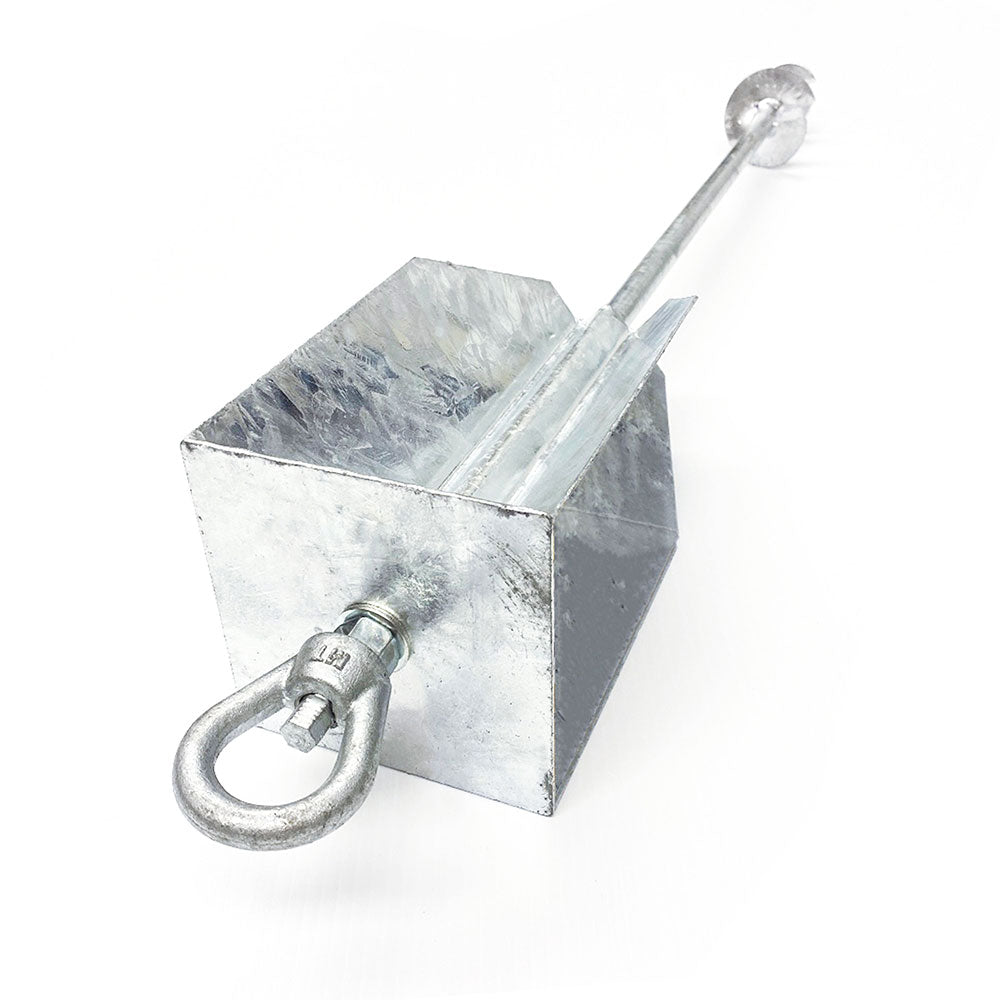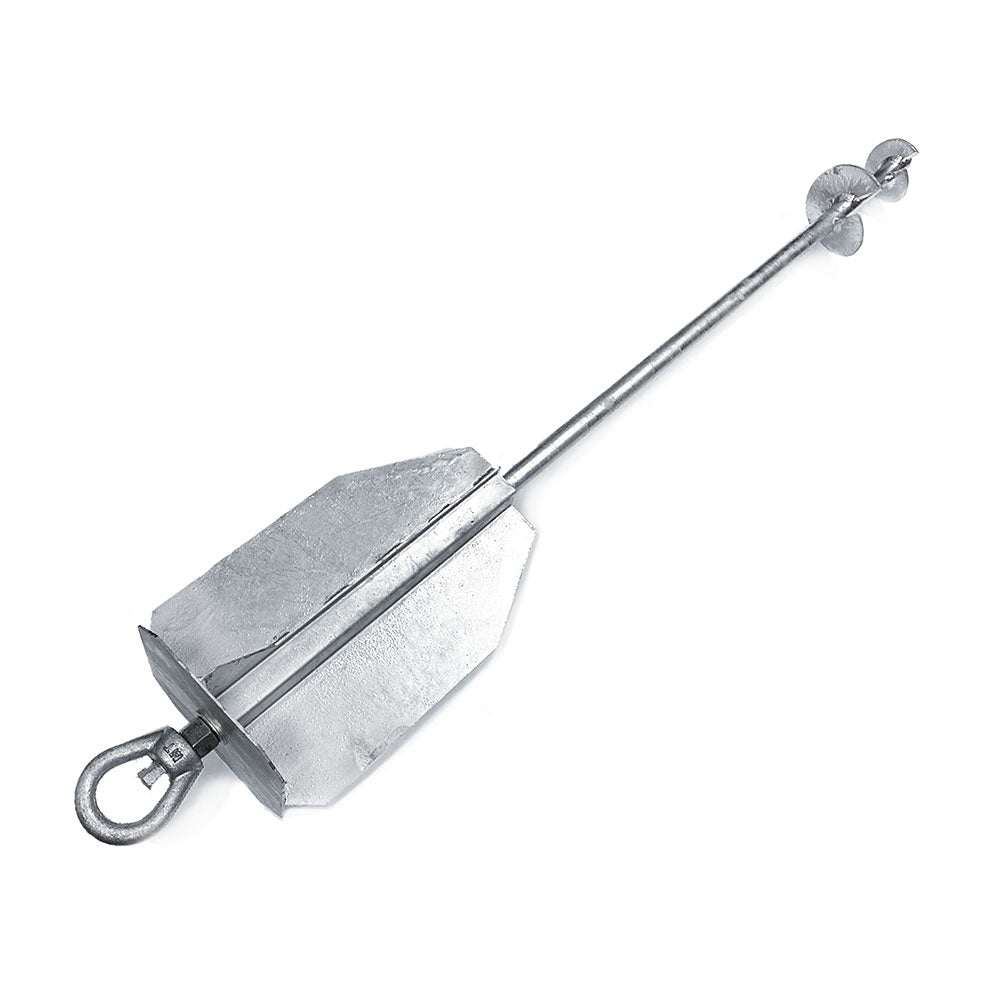Factors to Consider Before Purchasing a Durable Ground Anchor
Factors to Consider Before Purchasing a Durable Ground Anchor
Blog Article
Check Out the Various Kinds of Ground Support for Your Following Project
From auger supports, which stand out in diverse dirt conditions, to risk supports designed for temporary installments, the options are countless. In addition, concrete and screw supports existing distinct advantages in specific circumstances, while deadman anchors are tailored for applications calling for resistance to side pressures.

Auger Anchors
Auger supports are a popular choice in different building and landscaping projects because of their special style and effective securing capacities. These supports contain a helical screw-like shaft that is driven into the ground, permitting for a protected and steady hold. The spiral style facilitates very easy installment and makes the most of resistance versus side forces, making auger supports particularly effective in applications such as fencing, momentary frameworks, and erosion control.
The setup procedure of auger anchors is fairly straightforward. Auger supports can be conveniently eliminated and recycled, which adds to their cost-effectiveness and sustainability.
Among the substantial advantages of auger supports is their capability to distribute lots evenly throughout the surrounding soil, minimizing the threat of soil disruption and reducing environmental impact. Furthermore, they are less prone to heaving or loosening gradually contrasted to conventional securing approaches. As a result, auger supports are an exceptional option for tasks calling for resilient and trustworthy anchoring options.

Risk Anchors
When it pertains to protecting structures in a variety of outside applications, risk anchors supply a reputable and simple solution. These supports are normally created from resilient products such as steel or light weight aluminum, made to withstand environmental stresses while supplying ideal stability. Their easy design enables fast installment, making them an ideal option for short-term or irreversible anchoring requirements.
Stake anchors are specifically helpful in securing camping tents, covers, and other lightweight frameworks against wind and climate. They function by being driven right into the ground at an angle, developing a solid hold that withstands pull-out forces - Ground Anchor. The efficiency of risk supports depends upon a number of variables, including soil kind, moisture material, and the angle of setup
For included security, numerous stake supports include add-on factors for straps or ropes, permitting for tension modifications as required. In applications such as landscape design or building and construction, they can successfully stabilize equipment or structures on uneven surface. Generally, risk anchors provide a flexible and affordable remedy for securing numerous exterior installations, making them a favored option for service providers and do it yourself fanatics alike.
Concrete Anchors
Concrete supports give a durable option for protecting frameworks to concrete surfaces, making certain security and security in different applications. These supports are important for projects varying from household constructions to massive industrial installations. They come in different kinds, consisting of growth anchors, adhesive anchors, and undercut supports, each designed for certain tons requirements and ecological conditions.
Glue anchors make use of high-strength epoxy or resin to bond the support to the concrete, using superior load-bearing capacities, specifically in fractured concrete circumstances. Undercut supports create an unique form within the concrete, supplying exceptional holding power, particularly in applications where tensile loads are widespread.
When executed appropriately, concrete anchors significantly boost the structural integrity of numerous jobs, making them important in modern construction practices. Understanding the certain demands of your job will certainly assist in picking the ideal kind of concrete anchor for the job.
Screw Anchors

Screw supports are a functional attaching remedy that can be efficiently used in a selection of applications where conventional concrete supports might not suffice. These anchors contain a helical layout that enables them to be quickly driven into the ground, making them suitable for usage in soil and various other substratums. Their special structure offers superb holding power and resistance to pull-out pressures, making them ideal for countless projects, from landscape design to architectural support.
One of the primary benefits of screw anchors is their convenience of setup. They call for minimal tools and can commonly be mounted without the requirement for excavation, which saves both time and labor prices. Additionally, screw supports can be removed and reused, offering a sustainable solution for momentary applications.
Screw anchors are specifically beneficial in areas where dirt conditions are challenging, such as sandy or loose soils. Their capacity to be mounted at varying depths permits personalization based on particular task requirements. In general, screw anchors offer a effective and dependable securing method, making them an exceptional selection for designers and service providers looking for reliable services for their jobs.
Deadman Anchors
Deadman supports serve as a durable option for maintaining frameworks in difficult problems, particularly click for more info where typical securing techniques might fail. These supports contain large, hefty things buried underground, which develop resistance against lateral forces. The layout usually involves a horizontal element, such as a block of concrete or a metal plate, hidden in the dirt, to which straps or cable televisions are attached.
The performance of deadman anchors depends on their ability to distribute lots over a larger area, lowering the threat of failure in unstable dirt conditions. They are particularly helpful in applications such as keeping walls, short-term frameworks, and slope stablizing, where dirt activity can compromise the stability of the framework.
Installation of deadman supports needs careful preparation to ensure they are positioned at the appropriate deepness and alignment, maximizing their load-bearing ability. While they might require more labor and material than lightweight anchors, their reliability in damaging conditions makes them important for lasting tasks. In addition, deadman anchors are flexible and can be adjusted to different applications, making them a go-to selection for engineers encountering distinct obstacles in their projects.
Final Thought
Auger anchors succeed in varied dirt conditions, while stake supports match momentary applications. For concrete surfaces, growth and glue supports supply trusted alternatives, and screw anchors offer adaptability in tough surfaces.
Furthermore, concrete and screw anchors present one-of-a-kind advantages in particular circumstances, while deadman supports are customized for applications requiring resistance to lateral forces - Ground address Anchor.Auger anchors are a preferred selection in numerous construction and landscape design tasks due to their unique style and reliable securing capabilities. They come in different kinds, consisting of growth anchors, glue supports, and undercut anchors, each designed for particular tons requirements and environmental problems
Sticky anchors utilize high-strength epoxy or resin to bond the anchor to original site the concrete, providing exceptional load-bearing abilities, especially in split concrete scenarios. Overall, screw supports give a dependable and efficient securing technique, making them an exceptional choice for engineers and contractors looking for effective options for their projects.
Report this page